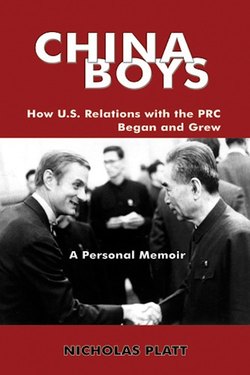Читать книгу CHINA BOYS: How U.S. Relations With the PRC Began and Grew. A Personal Memoir - Nicholas MD Platt - Страница 33
На сайте Литреса книга снята с продажи.
The Violence Grows
ОглавлениеIn the summer and fall of 1966, the Red Guards were encouraged to travel throughout the entire country spreading the chaos originally focused on the capital. The results were often deadly, as the targets of mass criticism and humiliation cracked under pressure, killed themselves, or were beaten to death. The Red Guard generation, liberated from school, free as never before to rebel against their elders and to travel anywhere they wanted, were willing instruments of the Leftists during the early months of the movement. But by the turn of 1966, the party structure was still standing. Officials, driven from their office buildings, were performing their duties from garages and other makeshift headquarters.
Realizing that the youth were not capable of toppling the party structure by themselves, the Leftists pulled out the last stop in Shanghai, declaring the “January Revolution” of 1967, which empowered anyone, of any age or walk of life, to rebel against established authority. That blew the lid off. In city after city throughout China during the next nine months, party structures were swept away by the waves of warfare waged between rival factional organizations.
These factional entities formed very quickly after the lid came off. They were marvels of Chinese organizational skill, with their own propaganda arms, dance troupes, street combat units, and work and welfare brigades. As the weeks passed, they united into mass coalitions along “have” and “have not” lines. Those with something to lose––the children of party and government cadres, the established workforces of state-owned enterprises, the peasants from rich suburban communes––combined to defend themselves against the attacks of the dirt poor and the disenfranchised. Anyone with a grudge or a score to settle piled on. The factions outdid each other in adopting revolutionary nomenclature—East Is Red, Red Flag Fighting Corps—making it very difficult for observers to understand the underlying motivation of the struggle. And they killed each other in large numbers. Sailing our pleasure junks in Hong Kong waters, we would encounter bodies floating out from the Pearl River Estuary, casualties in the battle for Guangzhou (formerly known as Canton).
I learned about the “have–have not” cleavage from a young man who had served as a telephone operator for the big “have not” faction in Guangzhou. He had fled for his life when his side began to lose, swam to Hong Kong, evaded border patrols, and turned himself in to the central police. Under the Colony’s hide-and-seek immigration rules, he was accepted as a refugee and put through the intelligence screen. I hardly ever had the time to interview refugees, but dropped everything to spend eight hours with him, going over the table of organization of his faction and his opponents. He knew the whole structure and helped us understand why the fighting was so intense. His attitudes were also instructive. He had not the slightest interest in the freedom offered by Hong Kong. His escape was simply an act of survival. He despised Madame Mao, whom he described as shallow and uneducated, and adored Chairman Mao, to whom he felt he owed his life. It was the Chairman’s teaching to fear no enemies and overcome all obstacles that inspired him during his swim.5
This, in broad outline, was the stuff of my analytical work during our last years in Hong Kong. There was little certainty in our judgments and a lot of debate and argument at each stage of the process. The knowledge that the Chinese were just as confused as we were lent scant comfort.
